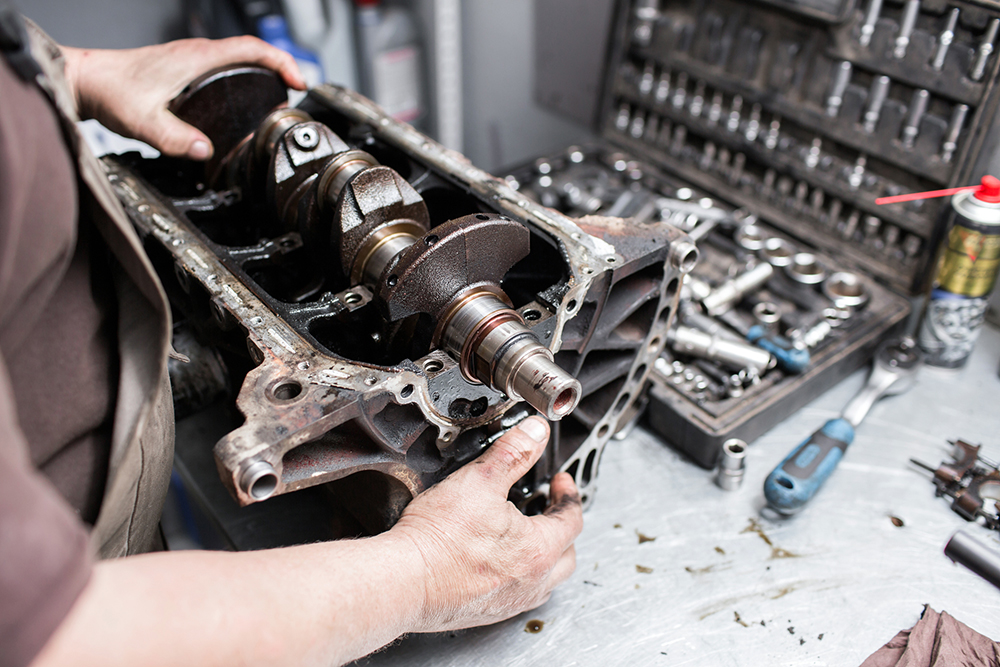The oil filter is a very important component; it traps dirt and debris, preventing them from circulating throughout the engine. This protects vital internal parts such as bearings, journals, and cylinder walls.
Another way the oil filter protects and helps lubricate the engine is through the use of an anti-drain back valve. This valve is predominantly used within the spin-on versions of today’s oil filter and not a part of the cartridge style filters. Although you may not have heard of it before or know what it does, this valve is extremely important. Extensive engine damage can result if it isn’t working properly.
Oil filter design
The oil filter’s design might seem simple, but there is a lot more to an oil filter than you might think. Before delving into the details of what damage can be caused by a faulty anti-drain back valve, it’s a good idea to know how a car oil filter works. Typical oil filter components include the following:
- Tapping or cover plate: This is the plate at the bottom of the filter. It serves as an entry and exit point for oil. It also contains a threaded center hole, which allows the filter to attach to the engine.
- Filter medium: Dirt and debris are trapped in the filter medium. Typically, it is constructed from microscopic cellulose fibers along with synthetic fiber. It is then saturated with resin for added strength. The filter medium is folded into pleats to create a greater surface area.
- Center steel tube: The center steel tube provides a structure for the filter. It also allows filtered oil to return to the engine.
- Relief valve: The relief valve opens when oil pressure is too great due to clogged filter media. This allows unfiltered oil to exit through the center tube to prevent engine starvation.
- End disc: Some oil filters use an end disc to prevent unfiltered oil from leaking into the center tube. Others use a sealant instead.
- Retainer: As the name implies, the retainer keeps the filter medium and end disc tight against the tapping plate.
- Anti-drain back valve: The anti-drain back valve prevents oil from draining out of the filter when the engine is turned off.
Engine damage caused by a faulty anti-drain back valve
During an oil change, it’s recommended you put fresh oil in the new filter before installing it. This is so oil is available to the engine as soon as it’s started.
The anti-drain back valve serves a purpose that’s similar to this oil change strategy. Every time your engine is shut off, the valve keeps oil from draining out of the filter. This allows the engine to receive oil immediately upon start up.
A faulty anti-drain back valve lets oil drain back into the engine. This keeps oil from getting to the engine when it’s first started. The result is engine wear and eventual failure from lack of lubrication. Low-quality oil filters often have a poorly designed anti-drain back valve that doesn’t work properly.
Don’t settle for low-quality oil filters
The best way to avoid anti-drain back problems is to use a high-quality filter. A good filter usually has a robust anti-drain back valve, designed to protect your engine. For example, Premium Guard offers oil filters that are rigorously tested for leakage and pressure burst. The Extended Life series oil filters also include a silicone anti-drain back valve to withstand extreme temperatures. A top-of-the-line oil filter is an inexpensive way to protect your vehicle’s engine.
Sources:
https://www.popularmechanics.com/cars/how-to/a8133/whats-actually-inside-an-oil-filter-13272754/
http://www.aa1car.com/library/oil_filters.htm
https://www.youtube.com/watch?v=X3JulJDNpeU


